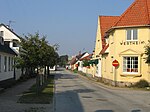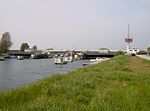Skanörs Ljung Nature Reserve
1969 establishments in SwedenGeography of Skåne CountyGeography of the Øresund RegionNature reserves in Vellinge MunicipalityProtected areas established in 1969 ... and 3 more
ScaniaSkåne County geography stubsTourist attractions in Skåne County
Skanörs Ljung Nature Reserve (Swedish: Skanörs ljung) is situated in the South-Western part of the Scania province of Sweden, in the Vellinge Municipality between Ljunghusen and Skanör-Falsterbo. Skanörs Ljung became a designated nature reserve 1969 and encompasses a total area of 5.75 km2 of which 2.122 km2 is the marine portion.
Excerpt from the Wikipedia article Skanörs Ljung Nature Reserve (License: CC BY-SA 3.0, Authors).Skanörs Ljung Nature Reserve
Kinells väg, Vellinge kommun
Geographical coordinates (GPS) Address External links Nearby Places Show on map
Geographical coordinates (GPS)
| Latitude | Longitude |
|---|---|
| N 55.404722 ° | E 12.887222 ° |
Address
Skanörs ljung
Kinells väg
236 42 Vellinge kommun
Sweden
Open on Google Maps








